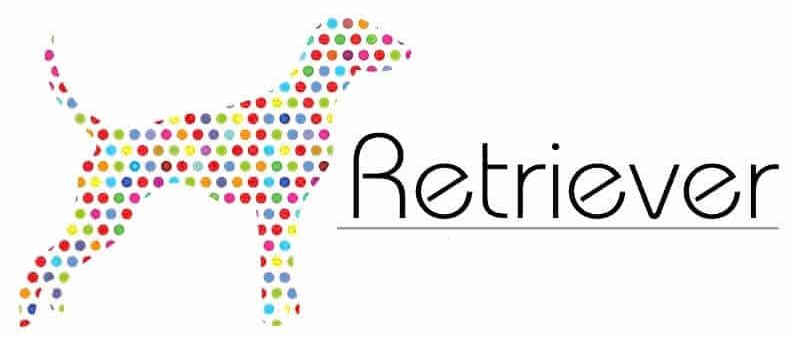Welcome to the comprehensive guide aimed at both potential and current Nova Scotia Duck Tolling Retriever owners in the UK. Known affectionately as ‘Tollers’, these dogs excel in ‘tolling’ or enticing ducks closer, a skill highly regarded by British outdoor enthusiasts and dog aficionados alike. This guide will articulate the nuances of the Duck Tolling Retriever community within the UK. It will also detail the vital knowledge required by aficionados of this breed and offer crucial insights on how to identify reputable breeders of Tollers in the UK.
For those pondering the addition of UK Toller puppies to their home, or simply wishing to deepen their understanding, this guide represents an authoritative bastion of information.
Amidst a burgeoning popularity within the British Isles, it has become increasingly essential to illuminate the Duck Tolling Retriever’s distinct attributes and their specific care needs. This guide aims to equip you comprehensively for an enriching experience with Tollers, a breed renowned for its loyalty, intelligence, and exceptional performance in the field.
Key Takeaways
- The Nova Scotia Duck Tolling Retriever is a talented breed, adept in the art of ‘tolling’ to attract waterfowl.
- Understanding the unique needs and characteristics of the Duck Tolling Retriever UK breed is paramount for prospective owners.
- Engagement with the UK Toller community and experienced Toller breeders in the UK is beneficial for both first-time and seasoned owners.
- Prospective owners should consider the commitment involved in rearing UK Toller puppies to ensure they thrive.
- Adopting through ethical channels and supporting local Toller rescue efforts are integral to the health and sustainability of the breed.
Understanding the Duck Tolling Retriever UK Breed
Delving into the Duck Tolling Retriever’s UK presence demands an appreciation of its compelling origins, aesthetic allure, and delightful disposition. This exploration applauds the breed’s evolution from its Canadian heritage to its cherished role in the UK. It thrives thanks to the Duck Tolling Retriever club UK’s support, the diligent efforts of Toller rescue UK organizations, and ethical breeding practices.
Origins and Breed History
Renowned for their striking red coats and adept retrieving capabilities, Duck Tolling Retrievers boast a heritage rooted in 19th-century Nova Scotia. There, they gained their name through ‘tolling’, a technique hunters employed to lure waterfowl. Upon their arrival in the UK, Tollers captivated both hunters and domestic pet enthusiasts. They have since secured their place, transcending their Canadian origins.
Characteristics and Temperament
The Duck Tolling Retriever exemplifies the energy and intelligence necessary for both an engaging family member and a committed hunting partner. Their sharp intellect and instinctual drive for both work and play render them perfectly suited for those valuing both dynamism and cognition in a dog. Interactions within Duck Tolling Retriever clubs across the UK consistently highlight the breed’s amiable and adaptable nature, underscoring their role as beloved companions.
Physical Attributes
Duck Tolling Retrievers distinguish themselves through their medium stature, striking red-orange fur, and robust, feathered tails, enabling facile navigation through water. Prospective owners must acknowledge the grooming commitment this breed demands. Their luxurious double coat necessitates regular maintenance, particularly after outdoor adventures.
Health Considerations and Lifespan
While generally robust, Tollers inherit certain genetic conditions. In these circumstances, counsel from seasoned Duck Tolling Retriever breeders in the UK proves indispensable. This advice ensures owners comprehend the health outlook of their pets. Typically, Tollers share 10-14 years with their families, contingent on attentive care and consistent veterinary visits.

- Connection with Duck Tolling Retriever club UK
- Assistance from Toller rescue UK in adoption and welfare
- Guidance and ethical breeding from Duck Tolling Retriever breeders UK
Integrating into the UK’s Duck Tolling Retriever community introduces a wealth of privileges and duties. The following table elucidates distinctions in engagement with clubs, rescues, and breeders within the UK.
| Aspect | Club | Rescue | Breeders |
|---|---|---|---|
| Educational Resources | Extensive | Moderate | Personalised |
| Community Support | Broad Network | Rehoming Assistance | Lifelong Guidance |
| Health and Welfare | Advocacy | Rehabilitation | Screening and Advice |
| Events and Activities | Competitions, Socials | Fundraising, Awareness | Meet-Ups, Puppy Training |
The intricate weave of the Duck Tolling Retriever’s lineage in the UK, complemented by an extensive network of clubs, rescues, and breeders, crafts a supportive environment. This community is poised to enhance the lives of both Tollers and their human companions.
Caring for Your Nova Scotia Duck Tolling Retriever
Providing for a Nova Scotia Duck Tolling Retriever’s needs is multifaceted, involving Duck Tolling Retriever training, Toller grooming, and understanding Duck Tolling Retriever dietary requirements. Immersing them in the UK lifestyle requires attentiveness and knowledge of their unique needs.
Training a Toller extends beyond basic obedience; it enriches their innate retrieval instincts. Effective training enhances behavioural standards, guarantees safety, and fosters mental health.
Preserving their unique coat and health necessitates consistent Toller grooming. Essential care of their waterproof double coat and ear maintenance prevent infections, contributing to overall well-being.
Addressing their considerable energy demands comprehension of their dietary needs. A nutritionally rich diet tailored for their energetic existence is crucial for sustaining their health and vigour.
- Consistent training sessions to develop obedience and retrieval skills
- Daily grooming rituals to manage their coat and cleanliness
- Specialised diet plans to meet energy and nutritional requirements
Social engagement and mental exercise are imperative; a Toller thrives on active mental and physical participation in their surroundings.
| Aspect of Care | Considerations | Frequency |
|---|---|---|
| Training | Structured obedience and retrieval activities | Daily exercise, weekly training classes |
| Grooming | Brushing, ear cleaning, nail clipping | Brushing 2-3 times a week, ear check weekly, nail clipping as needed |
| Diet | High-quality diet suitable for active breeds | Two meals a day, with adaptations for age and activity level |
| Mental Stimulation | Puzzle games, new tricks, interactive play | Daily |
| Socialisation | Interaction with other dogs and people | Regularly, as part of daily exercise |
The happiness of a Duck Tolling Retriever in the UK relies on a bespoke care strategy that acknowledges their lineage and nurtures their exuberant nature.
Conclusion
Embarking on the journey of Nova Scotia Duck Tolling Retriever ownership in the UK offers an opportunity to be a steward of a breed renowned for its verve and versatility. The Duck Tolling Retriever lifespan, averaging 10 to 14 years, signifies a long-term commitment. Prospective and existing owners must prepare for the duty of providing a nurturing environment throughout this time. It is imperative to not only consider the immediate joy a Toller brings but also the dedication required to ensure their well-being and happiness.
Throughout this guide, the emphasis has been laid on the multifaceted aspects of caring for these spirited canines. Responsible ownership goes beyond meeting basic needs; it encompasses a proactive approach towards health care, comprehensive training, and a keen engagement with the UK Toller community. Such an approach bolsters personal knowledge while contributing to the collective efforts in maintaining the breed’s cherished status. The UK Toller community, rich in camaraderie and support, serves as a treasure trove of knowledge for both neophyte and experienced Toller enthusiasts.
As we draw this guide to a close, the invitation stands for all Toller devotees to immerse themselves within breed-specific forums, clubs, and events to enrich their understanding and forge stronger bonds within this passionate group. Continual participation in the UK Toller community is not just beneficial—it’s pivotal for the preservation and flourishing of the Nova Scotia Duck Tolling Retriever heritage in the United Kingdom. The legacy of these remarkable animals rests on the shoulders of those who cherish them, and through informed, caring ownership, that legacy can continue to thrive for generations to come.
FAQ
What is the Nova Scotia Duck Tolling Retriever?
The Nova Scotia Duck Tolling Retriever, commonly known as a Toller, is a medium-sized gundog originating in Nova Scotia, Canada. This breed is adept at luring and retrieving waterfowl. Distinguished by their energetic, intelligent, and playful demeanor, Tollers excel in various activities outside their traditional roles.
How can I find reputable Duck Tolling Retriever breeders in the UK?
To locate esteemed breeders, conducting diligent research is advised. It is also beneficial to consult the Duck Tolling Retriever Club UK for a verified list. Select breeders who perform comprehensive health examinations, offer exhaustive pedigree details, and are committed to the breed’s well-being.
What are the key characteristics and temperament of this breed?
Tollers exhibit an extroverted and affectionate temperament. Noted for their high intellect, agility, and affinity for water, they thrive on vigorous physical exercise and cognitive challenges. Hence, they are ideally suited to energetic families with a penchant for outdoor activities.
What are the common health considerations for a Toller?
Tollers may be predisposed to hip dysplasia, progressive retinal atrophy, and some cardiac conditions. Preventative measures include routine veterinary assessments and complying with breeders’ health screening recommendations.
What grooming needs do Tollers have?
Possessing a double coat that repels water, Tollers necessitate regular grooming to minimise shedding and avert tangles. Bathing should be infrequent, while their pendulous ears require consistent inspections to forestall infections.
Can I adopt a Toller from a rescue organization?
Indeed, Toller rescue organisations in the UK offer adoption services for these dogs seeking new abodes. Potential adopters are encouraged to engage with breed-specific rescues for assistance and regarding the adoption process of a rescue Toller.
What kind of dietary needs does this breed have?
To support their vibrant energy and overall well-being, Tollers benefit from a balanced diet. High-quality canine nutrition tailored to their age, size, and energy output is recommended, with portion control to evade overfeeding.
Is the Toller breed suitable for first-time dog owners?
Given their intelligence and trainability, Tollers present certain challenges due to their intense energy and stimulation needs, potentially overwhelming for novice owners. Support from breeders or trainers with breed expertise is advantageous for first-time owners.
How long do Nova Scotia Duck Tolling Retrievers typically live?
Nova Scotia Duck Tolling Retrievers generally enjoy a lifespan of 12 to 14 years. Adequate care, consistent exercise, and a nourishing diet contribute to their longevity and vitality.
Are Tollers good with children?
When introduced early, Tollers are amicable and gentle with children, making them excellent family pets. Nonetheless, interactions between pets and young ones should always be supervised for safety.
How much exercise does a Toller need?
As notably active canines, Tollers require ample, strenuous exercise daily. A minimum of one hour of physical activities like walking, running, swimming, or engaging play is essential for their well-being.

